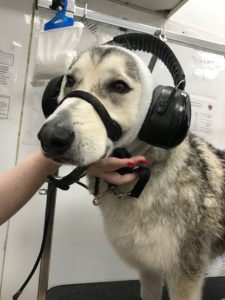Why doesn't my pet like being brushed?
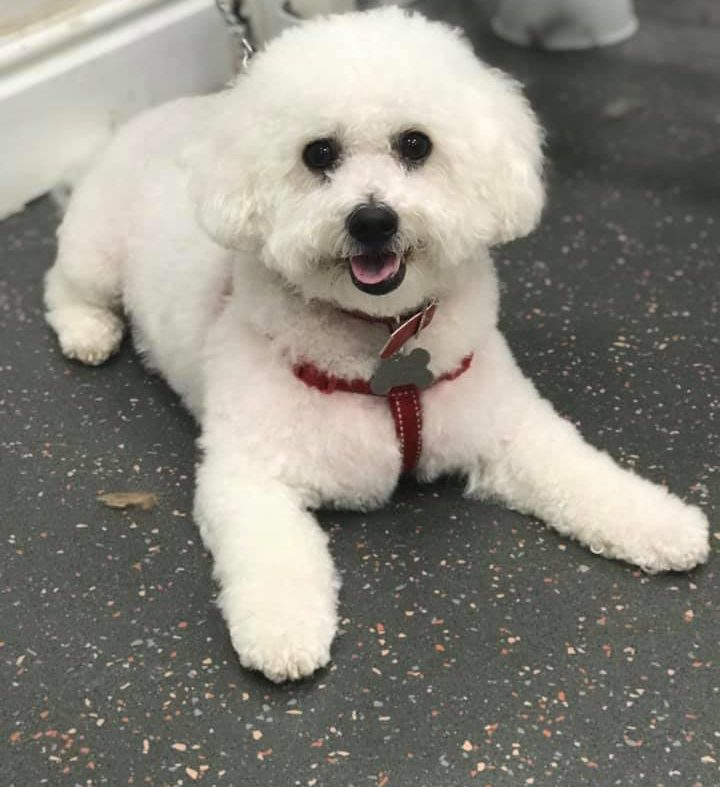
We groom them all!
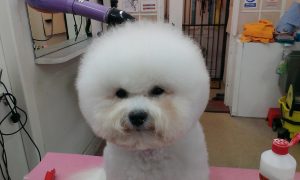
At Absolutely Animals we groom around 3,500 dogs and 900 cats, per year. We have been established for 28 years now, that’s a lot of pet grooming!
We groom pets throughout their whole lives, we see the changes in the pets’ health and demeanour throughout this time and how various scenarios can affect them, their personality and their behaviour, at home and during grooming.
Furthermore, we have lots of grooming experience’s that I would like to share it with you.
There are a variety of explanations as to why pets don’t like being brushed, but brushing your pet should feel no different for them than being stroked.
- If your pet likes being stroked, then you can resolve any grooming issues easily.
- If your pet doesn’t like being stroked, then you have more difficult tasks ahead.
Let’s break down these two scenarios to understand what may be happening around the grooming of your pet and how it can be resolved.
Pets love grooming
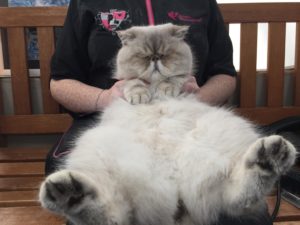
Pets who like to be stroked, but not groomed.
A pet’s skin and body can be delicate. Some pets enjoy a rigorous grooming and will enjoy the massaging effect it creates, others cannot stand even the slightest pull or pressure on the skin and body with any tools, this can be torture for them, especially if there are any under-lying health issues. Avoidance of grooming usually occurs when grooming is not carried out regularly.
Pets will exhibit different signs to show you they don’t like or are afraid of what is happening, this will include behaviour such as nipping, biting, vocalisation, avoidance, submission and a few may just shut down altogether, however, if you change the way you are using the tools, you can change their view of the grooming and show them that actually, they can enjoy being groomed.
Pets love to be Clean
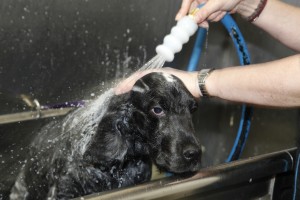
You probably won’t be surprised at the ingenious and sometimes hilarious ways in which some pets attempt to avoid the grooming altogether. It is commonly noticed when the brush comes out or the bath goes on, the pet prefers to disappear.
This is common because the pet is associating the tools or pattern with an uncomfortable experience, these behaviours once learnt can steadily get worse as the pet learns that when they do “their thing”, the attempts at the grooming stops and so the scenario repeats.
and get attention
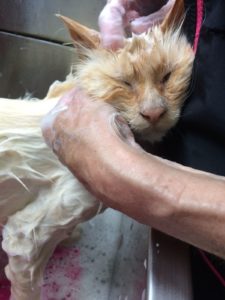
All you really need to do is change what you are doing.
These are easy scenarios to change, if we ensure the pet has boundaries, is rewarded and of course we are not unintentionally making the grooming uncomfortable for them, then we can make the grooming experience a pleasurable one.
The grooming session is different for every pet, so we need to look at every pets’ individual needs. One does not fit all when it comes to grooming our pets, but with a little more knowledge, we can work towards it being an experience both parties will love.
Avoid knots
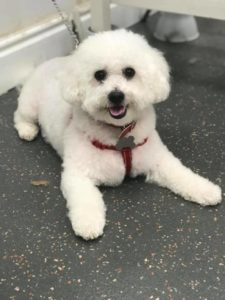
Have you ever wondered why, when it’s time for a bath, your pet looks to disappear? But bring him to a cold lake or muddy bog, and he will dive in, head first!
Nature tells our pets to seek shelter when the rain comes, and the shower feeling simulates the rain. But put a cloth over the shower head and voilà!
Your pet enjoys the bath! Yes, it really is as simple as that!
by regular grooming
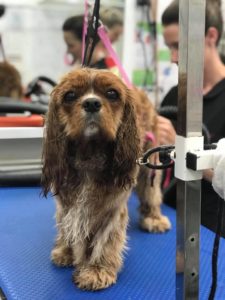
Top tips for grooming at home.
- Leave the grooming tools on the floor so your pet can get used to them and see they don’t hurt. Your pet should associate the tools with a pleasurable experience.
- Start off by stroking your pet with the grooming tools. Let them know, the tools only bring pleasure and rewards. Verbal and visual rewards, stroking or food rewards are best as well as smiling at your pet and telling them how clever they are!
- Ensure you have the right grooming tools for your pet. I shall be offering some free videos shortly on our YouTube channel and website on the correct tools for your dog’s coat type.
- Put your dog’s lead and collar on before grooming, so they have a boundary (wrap the lead round your leg or tie it to an unmovable object) then you have two hands to guide your pet easily. With cats, lay out a towel out on a table and don’t allow your cat to jump off it – after a few minutes they will generally stay there, or you could try a cat harness.
- When your pet does what you want, you must verbally praise them straight away. Rewarding the good brings quicker results than scolding the bad. But don’t be afraid to say no to unwanted behaviour, just don’t dwell on it or take it personally, look for the praise instead.
- Ensure grooming is carried out regularly (at least every week, maybe during your favourite TV program) – knots and debris in the coat is easy to remove when done regularly, and before it is embedded in the coat.
- Never dry brush! Ensure you brush after you use a conditioning spray (leave in conditioner mixed with water) – this helps to moisturise the hair, facilitating the brush to glide easily through the hair, without much pulling on the skin. This also helps to avoid knots from forming and gives a glossy look to the coat.
- If you have a pet with a long coat, you need to part the coat first, so you are brushing from the skin outwards. Brushing over the top does nothing.
- If you have big knots, you can rub corn flour into them on a dry coat, before the bath and gently brush out whilst holding the root of the knot. Brush it all out before applying anything wet.
- When you bath, ensure you condition, rinse well and dry to the root. This is especially important on long coated breeds, as if you leave the roots damp, knots will occur very quickly.
- Lastly, use the correct comb for your pet, this is your secret weapon. The comb should glide through the coat, all the way to the skin. Use a wide tooth comb for thick coats and a closer tooth comb for finer hair. If the comb doesn’t glide, you need to go back to step 7 and 8.
Prevention is better than cure!
Avoid knots forming with regular grooming of your pet at home, and everyone is happy.
Your pet will object to you trying to tug out knots….and who can blame them!
Prevent the matts
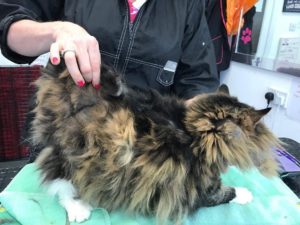
Pets who don’t like to be stroked.
This makes the grooming experience a difficult one, but luckily these pets are really few and far between. These pets range from the “I don’t like it but will tolerate it” to “There’s NO WAY you are touching me, and I am going to use any means possible for it not to happen”!
Those pets that will tolerate the grooming will do so with the right methods, boundaries and rewards or by using distraction as a tool. You must also ensure your own personal health and safety is adequate, you don’t want to get bitten or scratched.
If you have a pet like this, give me a call to see if I can help you. 020-8857-2888
Grooming keeps pets healthy

Your pet just loves being groomed.
The more you groom your pet, the more they will just love it. Regular grooming will save YOU, not only huge vet fees, but often additional grooming fees as well.
Knots, debris and dirt are removed from the coat easily with no objections from your pet, if groomed regularly. Pets will object to knots being pulled out of the coat once they have built up, as by this time it is uncomfortable and at worst, it hurts!
Insects such as fleas, ticks and any abnormal health issues are spotted early with regular grooming and are treated before they can develop into anything serious; ensuring your pet is much healthier and happier.
Food is a good distraction method which you can use. Your pet will be hungry and be more focused on the food than the grooming. Feed at certain times and remove food once the meal is finished (don’t leave food down).
If all this fails, then you will probably need to seek professional advice, from an experienced handler who grooms or a behaviourist.
You may have to resort to sedation, although it’s rare that this is required. But we do need to draw the line somewhere.
Please look for the videos. Next month’s blog will be on how to groom your pet.
Change the method
